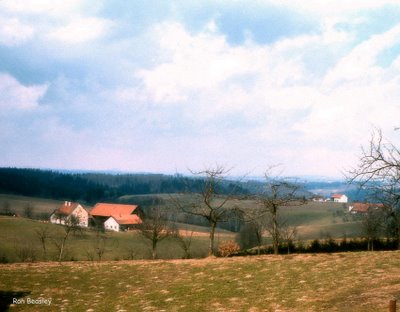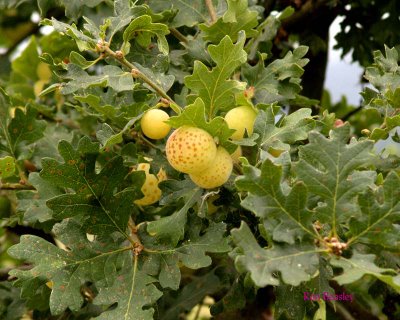
Click On Picture For Larger Image


 Early film emulsions were orthochromatic, they were sensitive only to blue light. To duplicate that sensitivity I used the Blue Switch in the Red Prince plugin.
Early film emulsions were orthochromatic, they were sensitive only to blue light. To duplicate that sensitivity I used the Blue Switch in the Red Prince plugin.  Click on picture for larger image.
Click on picture for larger image.
 This picture was taken in Southern Bavaria many years ago. The original was a color transparency. Scanned image inhanced with Photoshop plugin Virtual Photographer.
This picture was taken in Southern Bavaria many years ago. The original was a color transparency. Scanned image inhanced with Photoshop plugin Virtual Photographer. This is Laetiporus sulphureus, also known as Chicken of the Woods. Another example can be found here.
This is Laetiporus sulphureus, also known as Chicken of the Woods. Another example can be found here. This is another picture I took at The Tualatin River National Wildlife Refuge yesterday. These are Oak Apples
This is another picture I took at The Tualatin River National Wildlife Refuge yesterday. These are Oak Apples Oak apple galls are sometimes mistaken for an actual crop of the tree, such as apples on on apple tree, but are actually deformed leaves. The gall is about 1 1/4- 2 inches or larger in diameter, globular, and smooth. The outside is green and darkens with age. The inside has a juicy, white, spongy substance with a small, hard center where the parasite is located. When the parasite leaves the gall, the gall dries and the insides become a mass of fibers.
Several species of gall wasps cause oak apples. Biorhiza pallida is one such insect and is a good example of the alternation of generations in insects that cause different gall stages. Alternation of generations is the alternation of different forms of an organism during a species life cycle. One generation often behaves and physically appears different from the second generation. The third generation may then behave like the first generation, the fourth like the second, and so on.
- In May, a wingless Biorhiza pallida female(P1) inserts her eggs into the base of a vegetative bud. This activates the oak into the process of forming a protective structure, the gall, around the eggs.
- The unilocular, multilarval oak apple gall matures in June and July.
- By late July, full winged male and female wasps (F1), that have developed in separate galls, exit the structures through exit holes.
- The emerging wasps mate, while the deserted gall shrinks and blackens.
- The fertile females burrow into the soil and insert their eggs into the oak tree's roots.
- Root galls form which are spherical, brown, unilocular, and unilarval.
These root galls mature in approximately 16 months.- Wingless females(F2) emerge, climb up the oak tree's trunk, and lay eggs in the leaf buds.
- The cycle continues to show alternation of generations.
 I made my second trip over to the Tualatin River National Wildlife Refuge today. It was once again a wonderful break. Ran across this Killdeer who was willing to pose in an effort to keep me away from the nest.
I made my second trip over to the Tualatin River National Wildlife Refuge today. It was once again a wonderful break. Ran across this Killdeer who was willing to pose in an effort to keep me away from the nest.
